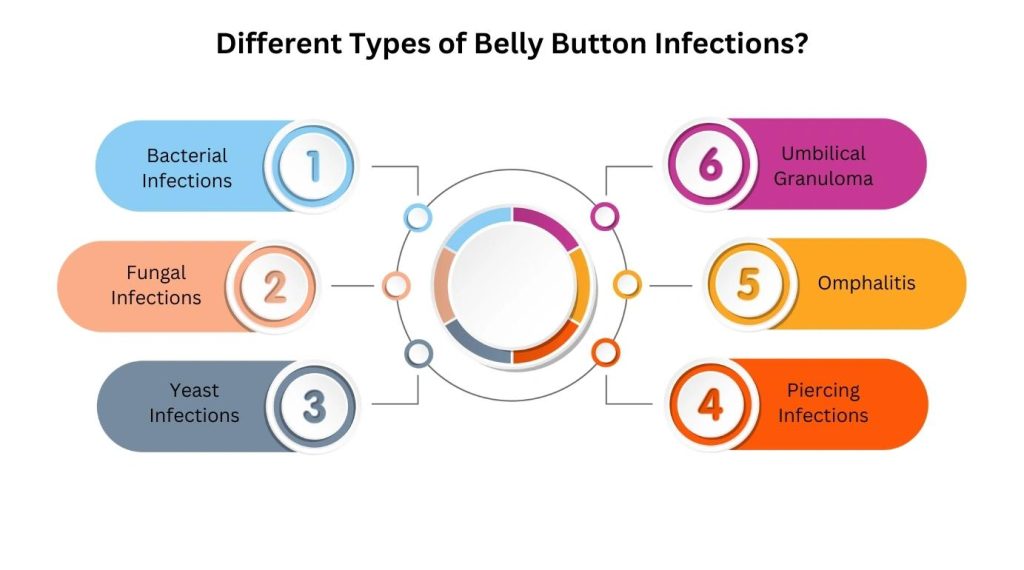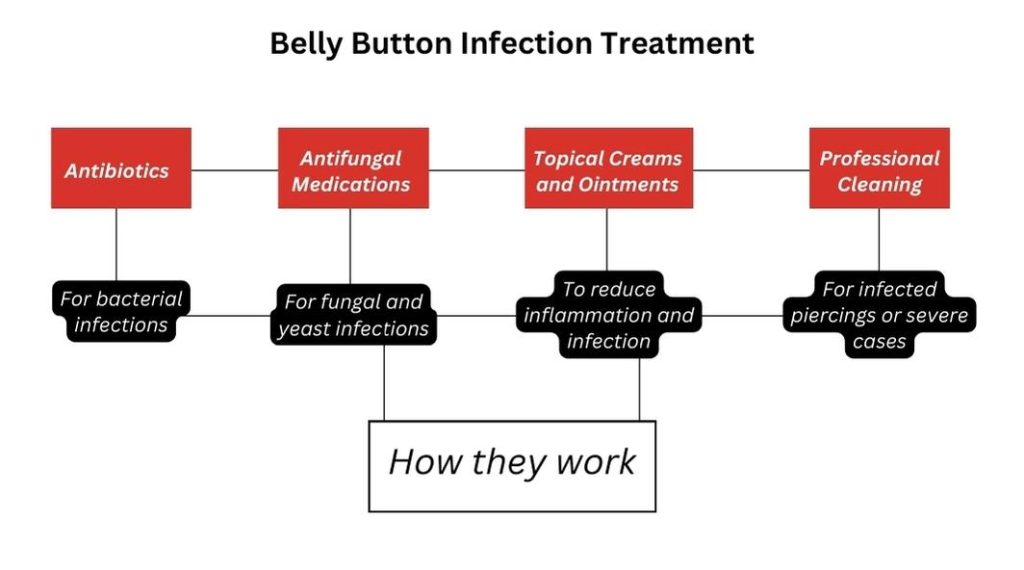Belly button infections might sound unusual, but they are more common than you think. Affecting both children and adults, these infections can stem from various causes and often catch people off guard. Whether you’re a concerned parent or an adult noticing unexpected symptoms, it’s essential to recognize the signs early.
Healthcare experts emphasize that proper hygiene and timely treatment are crucial in preventing complications. By understanding the causes and knowing what to look for, you can effectively manage and treat this often-overlooked issue.
Can a Belly Button Infection Kill You?
While a belly button infection can be uncomfortable and concerning, it is rarely life-threatening. Most infections are localized and can be effectively treated with proper hygiene and medication.
However, if left untreated, an infection can spread and lead to more severe complications, particularly in individuals with weakened immune systems. In extreme cases, the infection can lead to systemic issues like sepsis, which can be life-threatening.
Therefore, it’s essential to seek medical attention if you notice persistent redness, swelling, or discharge from your belly button to prevent any serious health risks.
Symptoms Associated with a Belly Button Infection?
Recognizing the symptoms of a belly button infection early can help in seeking timely treatment and preventing complications. The signs can vary in severity, but some common symptoms to watch out for include:
- Redness or swelling around the belly button
- Pain or tenderness in the area
- Discharge that may be yellow, green, or have an unpleasant odor
- Itching or irritation
- Fever, indicating a more serious infection
- Skin that feels warm to the touch around the navel
- A noticeable lump or mass near the belly button
- If you experience any of these symptoms, it’s important to consult a healthcare professional for proper diagnosis and treatment.
Different Types of Belly Button Infections?
Belly button infections can arise from various sources, each presenting distinct symptoms and requiring specific treatments. Understanding the different types of infections can help in identifying the root cause and seeking appropriate medical care. Here are the primary types of belly button infections:
 1. Bacterial Infections:
1. Bacterial Infections:
Caused by: Common bacteria like Staphylococcus and Streptococcus, which thrive in the moist and warm environment of the belly button.
Symptoms: These infections typically present as redness and swelling around the navel area. There may be pain or tenderness, and discharge that is often yellow or green with a foul odor.
2. Fungal Infections:
Caused by: Yeasts such as Candida, which can overgrow in moist, dark areas.
Symptoms: Fungal infections often cause a red, itchy rash. The skin around the belly button may appear raw or irritated, and there may be a white, cheesy discharge.
3. Yeast Infections:
Caused by: An overgrowth of natural yeast present in the body, particularly in individuals with compromised immune systems or those who do not maintain proper hygiene.
Symptoms: Yeast infections can cause the skin around the navel to become itchy and red. There is often a thick, white discharge that may have an odor.
4. Piercing Infections:
Caused by: Improper care or the use of unsterile equipment during the piercing process.
Symptoms: Infections related to belly button piercings typically result in redness and swelling around the piercing site. There may be significant pain, and pus can discharge from the piercing hole.
5. Omphalitis:
Common in: Newborns, due to their newly cut umbilical cord stump.
Caused by: A bacterial infection of the umbilical stump, often caused by bacteria such as Staphylococcus, Streptococcus, or Escherichia coli.
Symptoms: Omphalitis presents as redness and swelling around the umbilical area in newborns. The area may produce pus, and the baby might exhibit signs of fever or irritability.
6. Umbilical Granuloma:
Common in: Infants, during the healing process of the umbilical stump.
Caused by: Incomplete healing of the umbilical stump, leading to the formation of excess tissue.
Symptoms: This condition results in a small, moist, red lump of tissue that can persist after the rest of the umbilical stump has healed.
Belly Button Infection Treatment
Treating a belly button infection promptly is crucial to prevent it from worsening or spreading. The treatment approach depends on the type and severity of the infection. While medical intervention is often necessary, there are also several home remedies that can help alleviate symptoms and support the healing process.
 Medical Treatment Options
Medical Treatment Options
Antibiotics:
For bacterial infections: These are typically prescribed by a healthcare professional when the infection is confirmed to be bacterial. Oral antibiotics like amoxicillin or topical antibiotics such as mupirocin ointment are commonly used. In more severe cases, intravenous antibiotics might be necessary.
How they work: Antibiotics help eliminate bacterial infection by targeting the bacteria and preventing them from multiplying. It’s essential to complete the entire course of antibiotics, even if symptoms improve, to ensure the infection is fully eradicated.
Antifungal Medications:
For fungal and yeast infections: These can be either topical or oral, depending on the severity of the infection. Common antifungal creams include clotrimazole and miconazole.
How they work: Antifungal medications work by disrupting the cell membranes of the fungi, effectively killing them or stopping their growth. Consistent application as directed by a healthcare provider is important for effective treatment.
Topical Creams and Ointments:
To reduce inflammation and infection: These can include antiseptic creams, antibiotic ointments, or antifungal creams, depending on the cause of the infection.
How they work: These creams help reduce symptoms like redness, swelling, and pain by addressing the underlying infection. They are applied directly to the affected area, providing localized treatment.
Professional Cleaning:
For infected piercings or severe cases: A healthcare professional may need to clean the infected area thoroughly, especially if there is a significant buildup of pus or debris.
How it works: Professional cleaning involves removing any infected material and ensuring the area is properly disinfected. In some cases, the piercing may need to be temporarily removed to allow for complete healing.
These medical treatments are essential for effectively managing and curing belly button infections. However, they should be used in conjunction with proper hygiene and home care to prevent recurrence and promote overall skin health.
Home Remedies
- Warm Salt Water Soak: Dissolve a teaspoon of salt in a cup of warm water and gently clean the area with a cotton ball.
- Turmeric Paste: Apply a paste made from turmeric powder and water to the infected area, as turmeric has natural antibacterial properties.
- Tea Tree Oil: Dilute tea tree oil with a carrier oil and apply it to the infection for its antifungal and antibacterial effects.
- Aloe Vera Gel: Apply pure aloe vera gel to soothe the skin and reduce inflammation.
Keep the Area Dry: Ensure the belly button area stays dry to prevent further bacterial or fungal growth. - Good Hygiene: Clean the area regularly with mild soap and water, and dry thoroughly.
Over-the-Counter Pain Relievers: To manage pain and discomfort associated with the infection.
Bottom Line
While belly button infections are typically not life-threatening, they can lead to serious complications if left untreated. Recognizing the symptoms early and seeking appropriate medical treatment is essential for preventing the infection from spreading and causing more severe health issues. Maintaining good hygiene and using effective home remedies can support the healing process.
Remember, if you experience persistent or worsening symptoms, it’s crucial to consult a healthcare professional. Addressing the infection promptly ensures a swift recovery and reduces the risk of further complications, answering the concern: Can a belly button infection kill you? With proper care, the answer is usually no.
FAQs
Question 1: Is belly button discharge normal?
Ans: No, belly button discharge is not normal and usually indicates an underlying issue such as an infection, a cyst, or a foreign body. If you notice any discharge, it’s important to monitor other symptoms and consult a healthcare professional for proper diagnosis and treatment.
Question 2: Why is there liquid in my belly button?
Ans: Liquid in your belly button can result from an infection, either bacterial or fungal, leading to pus or other discharge. It can also be due to a cyst that has ruptured or irritation caused by improper cleaning or a foreign object, like a piercing.
Question 3: How to stop belly button discharge?
Ans: To stop belly button discharge, maintain proper hygiene by cleaning the area gently with mild soap and water. Avoid inserting any objects into the belly button. If the discharge persists, appears infected, or is accompanied by pain, swelling, or redness, seek medical attention for appropriate treatment, which may include antibiotics or antifungal medications.
Question 4: Can I clean my infected belly button with salt water?
Ans: Yes, cleaning an infected belly button with salt water can help. Dissolve a teaspoon of salt in a cup of warm water and gently clean the area with a cotton ball or swab. This solution can help reduce bacteria and promote healing. However, if symptoms persist or worsen, consult a healthcare professional for further treatment.


